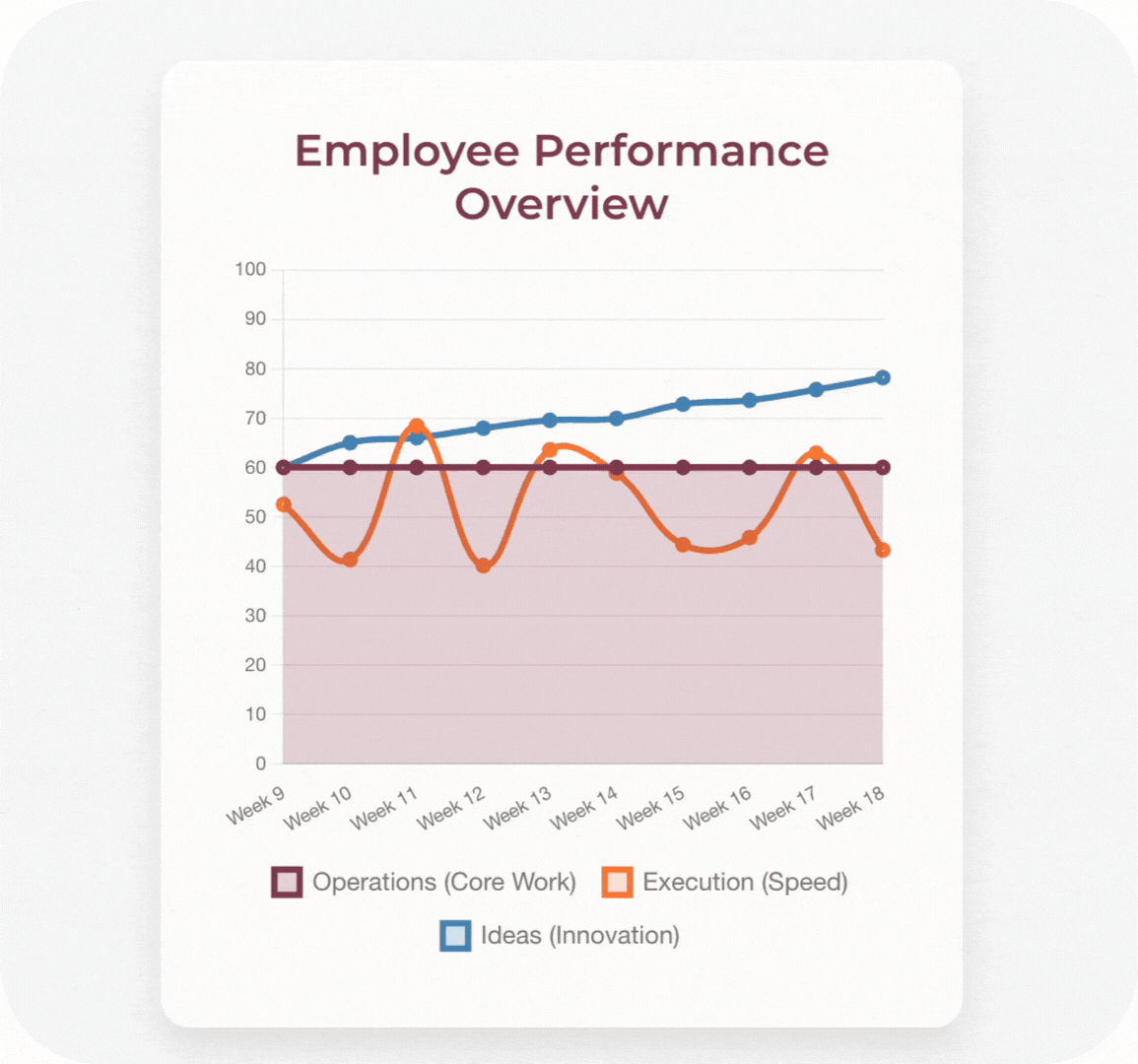Most workplaces are still stuck in outdated reward systems. Promotions go to those who navigate office politics best.
Short in video:
Bonuses land in the hands of those who “look busy” rather than those who create real impact.
And the fastest, most effective employees? They just get piled with more work — until they burn out.
But what if we flipped the system?
What if compensation, bonuses, and resources weren’t distributed based on titles, tenure, or hours worked, but on something far more meaningful — energy?
Energy is the real currency of work. It’s what drives execution, innovation, and growth.
PART 1: 3 types of energy that drive success
ONE.
Operations energy: keeping the machine running.
This is the foundation. It’s the work that keeps a company alive — managing processes, problem-solving, keeping projects moving. It’s what most salaries are supposed to cover.
But here’s the problem: most workplaces don’t actually measure this energy — they measure attendance. A warm body at a desk (or in a sync video meeting) is not the same as someone actively keeping things on track.
Instead of paying people for “showing up,” salaries should reflect the actual energy employees invest in keeping operations running.
TWO.
Execution energy: speed that creates value.
In most companies, if you’re fast, you get punished. You finish projects quickly? Here’s more work. You meet deadlines early? Now you’re the go-to fixer.
That’s insane. Speed is a massive competitive advantage. Research shows that companies that move quickly outperform their competitors by 2x in revenue growth.
Instead of rewarding speed with burnout, we should recognize it as a core value driver.
Employees who work faster should be compensated for that efficiency — through bonuses, extra equity, or other incentives — instead of just getting more work dumped on them.
THREE.
Investment energy: ideas that drive growth.
Ideas don’t appear out of nowhere. They come from experience, deep thinking, and actual effort.
Yet in most workplaces, even ideas that generate millions in revenue don’t result in meaningful rewards for the people who came up with them.
Think about it: if an employee suggests an idea that turns into a $10M revenue stream, what do they usually get? Maybe a “thank you” email. Maybe a small bonus. But the company reaps the long-term rewards.
That’s not how real investment works.
Innovators should be compensated like investors. Whether it’s through revenue-sharing, an equity stake, or structured bonuses, big ideas should yield big rewards.
But it’s not just about time — it’s about valuing energy investment the way we value financial investment.
PART 2: why this approach works
✔️ It’s fairer. Salaries cover operations, but real rewards come from speed and innovation.
✔️ It prevents burnout. No more punishing top performers with extra work just because they’re efficient.
✔️ It drives engagement. Employees will actually be motivated to contribute because their effort is directly tied to their rewards.
Now, imagine a system where all of this is tracked in real-time—like a stock market for employee contributions.
Call it EmployeeCoin.
No more office politics. No more outdated performance reviews. Just real impact = real rewards.
PART 3: maybe this is the Gen Z approach to work?
This isn’t just theory — it aligns with how younger generations think about work.
✔️ Gen Z and Millennials crave fairness. Gen Z employees prioritize fair pay based on contribution, not hierarchy.
✔️ They value flexibility, not outdated structures. They’re less likely to be motivated by promotions and more likely to be engaged if their actual impact is rewarded.
✔️ They expect transparency. The traditional closed-door salary and bonus discussions? A thing of the past. A real-time, transparent system ensures contributions = compensation.
The way we work is evolving. Maybe this is how we finally fix the broken reward system.
OUTRO: it may seem like just an idea, but it’s inevitable
You might be thinking, this sounds great in theory, but is it realistic?
Here’s the thing: work is already changing. Companies that don’t adapt will fall behind.
This isn’t just about fairness — it’s about real business efficiency. The more analytics and forecasting tools you have, the less you have to guess about performance.
If we can measure energy investment in real time, we remove bias, inefficiency, and wasted potential from the workplace.
And in today’s world — where speed, innovation, and agility define success — that’s not just an HR upgrade. It’s a business survival strategy.
So, what do you think? Would you work in a system like this?
“You may say I’m a dreamer, but I’m not the only one.” – John Lennon







